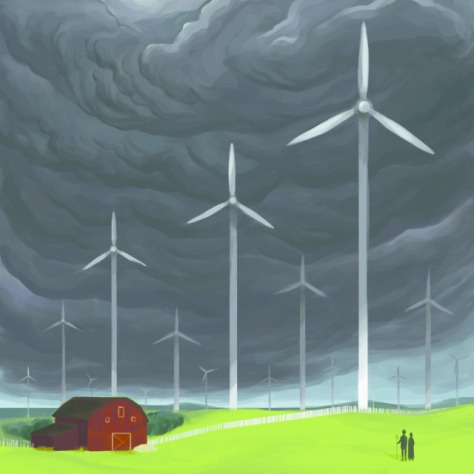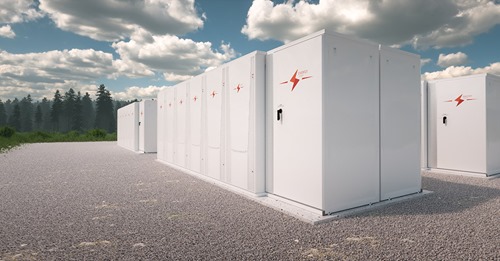ERO number 019-3471 Notice type Regulation Act Ontario Energy Board Act, 1998 Posted by Ministry of Energy, Northern Development and Mines Notice stage Proposal Proposal posted April 15, 2021 Comment period April 15, 2021 – May 25, 2021 (40 days) Open Last updated April 15, 2021
This consultation closes at 11:59 p.m. on:
May 25, 2021 Submit a comment Follow this notice
Proposal summary
We are proposing to repeal sections of the Electricity Act, 1998 and the Ontario Energy Board Act, 1998 that were introduced under the Green Energy and Green Economy Act, 2009 to promote and prioritize the development of renewable energy.
On this page
- Proposal details
- Supporting materials
- Comment
- Connect with us
Proposal details
We are proposing to repeal three sets of legislative provisions in the Electricity Act, 1998 (EA) and the Ontario Energy Board Act, 1998 (OEBA) that promote and prioritize renewable energy generation projects. Ontario has built a clean energy supply. Prioritizing renewable generation is no longer appropriate.Going forward, Ontario will ensure value for ratepayers by allowing all resources to compete to meet system needs.
First, we propose to repeal section 25.37 and clause 114 (1.4) (0.a.1) of the EA. Together with O. Reg. 326/09 (Mandatory Information Re Connections), these sections prescribe timelines for completing complex grid connection assessments for renewable energy projects and other requirements that apply to Local Distribution Companies (LDCs) and the Independent Electricity System Operator (IESO). These provisions also prescribe requirements that LDCs and the IESO must report quarterly on the number of assessments they complete and the ability of the system to accommodate more projects.
A related proposal to revoke O. Reg. 326/09 was posted to the Environmental Registry of Ontario on December 15, 2020 for a 50-day public comment period.
These actions would remove priority timelines for LDCs and the IESO to complete complex grid connection assessments for renewable energy projects and bring consistency for all generation types seeking similar assessments. Removing these provisions would help make Ontario more competitive by cutting red tape and reducing regulatory burden and aligns with the following ongoing initiatives led by the Ontario Energy Board (OEB) and the IESO, as set out below.
Through the Distributed Energy Resources (DER) Connections Review initiative, the OEB is reviewing the requirements for the connection of DERs by licensed electricity distributors. The OEB is consulting with customers, DER providers, industry associations and distributors to identify barriers to the connection of DERs, and where appropriate, standardize and improve the connection process.
As part of the Framework for Energy Innovation: Distributed Resources and Utility Incentives consultation, the OEB is working with stakeholders to identify and consider regulatory reforms that would facilitate investment in DERs on the basis of the value to consumers, which may include exploring new and innovative ways to make system information available.
This would also align with the IESO’s efforts to plan for future electricity supply in a manner that offers value to ratepayers by allowing any resource that can meet system needs to compete.
Second, we propose to repeal sections 26 (1.1), (1.2) and (1.3) of the EA, and paragraph 1 of subsection 70(2.1) of the OEBA, which create the authority to make a regulation that would provide priority grid access for renewable energy generation facilities. No regulation was made under this authority, so this prioritization was never implemented.
Third, we propose to repeal paragraph 2 of section 96(2) of the OEBA, which requires the OEB to consider the promotion of energy from renewable sources when determining if a Leave to Construct application for an electricity transmission project is in the public interest. Repealing this paragraph will focus the scope of the OEB’s Leave to Construct hearings on the topics of price, reliability, and quality of service.
This repeal aligns with amendments made to the OEBA in 2020 to remove an OEB objective to promote renewable energy generation, including through the expansion or reinforcement of transmission and distribution systems to accommodate the connection of renewable energy generation facilities.
Supporting materials
Related linksClick to Expand Accordion
Related ERO noticesClick to Expand Accordion
View materials in person
Important notice: Due to the ongoing COVID-19 pandemic, viewing supporting materials in person is not available at this time.
Please reach out to the Contact listed in this notice to see if alternate arrangements can be made.
Let us know what you think of our proposal. Have questions? Get in touch with the contact person below. Please include the ERO number for this notice in your email or letter to the contact.
Read our commenting and privacy policies.
Submit online
Submit a comment
Submit by mail
William Coutts
Ministry of Energy, Northern Development and Mines, Conservation and Renewable Energy Division
77 Grenville St.
5th Floor
Toronto, ON
M7A 2C1
Canada
Connect with us
Contact
William Coutts
Phone number (647) 406-2987 Email address William.Coutts@ontario.ca
Share
Email
Facebook
Twitter
Sign up for notifications
We will send you email notifications with any updates related to this consultation. You can change your notification preferences anytime by visiting settings in your profile page.Follow this notice











